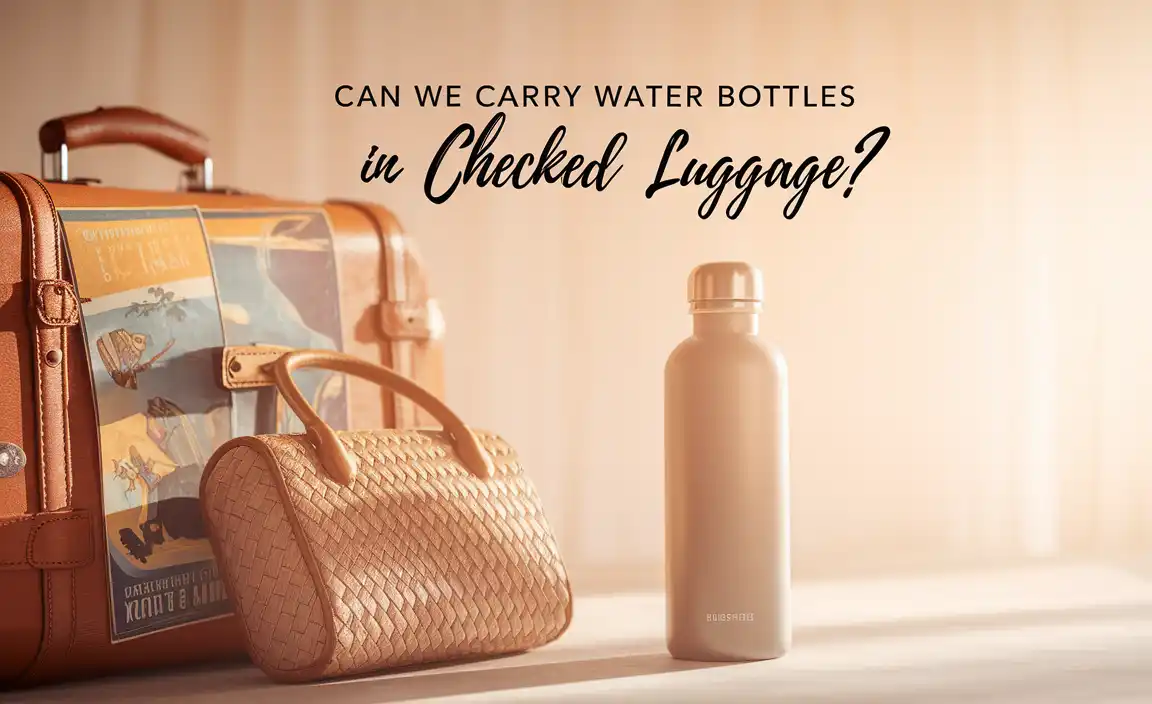Atacama Desert Free Finds: Essential & Amazing
Discovering the Atacama Desert’s wonders doesn’t require a big budget! You can experience incredible sights and unique activities without spending a dime. This guide reveals the essential and amazing free finds, making your Atacama adventure unforgettable and affordable. Get ready for breathtaking landscapes and memorable moments that cost absolutely nothing.
Welcome, fellow travelers! The Atacama Desert, often called the driest place on Earth, is a land of stark beauty and unparalleled natural phenomena. Many travelers dream of exploring its vast, alien landscapes, but the thought of expensive tours can be daunting. What if I told you that some of the most profound and awe-inspiring experiences in the Atacama are completely free? It’s true! You can witness magnificent starry skies, hike through otherworldly valleys, and soak in the unique silence of this incredible region without opening your wallet for many activities. This article is your friendly guide to uncovering these hidden gems, ensuring your journey is rich in experience, not just expense. We’ll cover everything you need to know to find and enjoy these amazing free finds. Let’s dive in and unlock the secrets of a budget-friendly Atacama!
Unveiling the Atacama Desert: What Makes It So Special?
Before we get to the free treasures, let’s briefly touch upon why the Atacama Desert is a must-visit destination. Located in northern Chile, it’s renowned for its extreme aridity, with some areas receiving virtually no rainfall for centuries. This harsh environment has created a surreal and dramatic landscape, unlike anything you’ll find elsewhere. Think vast salt flats, towering volcanoes, surreal rock formations, and some of the clearest night skies on the planet, making it a prime location for astronomical observation. The unique conditions also mean that life here, though scarce, is wonderfully adapted, offering a glimpse into resilience.
Your Guide to Atacama Desert Free Finds
The good news is that the most breathtaking aspects of the Atacama are its natural landscapes, and they are, for the most part, free to explore and admire. While some specific viewpoints or guided experiences might have a fee, the inherent beauty of the desert itself is accessible to everyone.
1. Stargazing: The Universe on Your Doorstep
This is arguably the Atacama’s most famous free offering. Due to its high altitude, clear skies, and minimal light pollution, the Atacama is a world-class destination for stargazing. You don’t need an expensive tour to see the magic.
How to Enjoy For Free:
Find a Dark Spot: Step a few minutes away from the town lights of San Pedro de Atacama (the main tourist hub). Even a short walk can make a huge difference in light pollution.
Let Your Eyes Adjust: Give your eyes at least 15-20 minutes to adapt to the darkness.
Look Up! Marvel at the Milky Way, constellations, and planets. On a clear night, you can see thousands of stars.
Use a Stargazing App: Many free apps (like SkyView Lite, Star Walk 2 Free) use your phone’s GPS and compass to identify celestial bodies.
What to Expect:
Incredible clarity of stars.
Visible Milky Way, often looking like a shimmering river.
Southern Hemisphere constellations prominent.
Potential to see shooting stars.
2. Valle de la Luna (Moon Valley) and Valle de la Muerte (Death Valley) at Sunset
While official entry to Valle de la Luna often involves a fee for a specific viewpoint, the general areas surrounding these valleys, and certain access points, allow for spectacular views, especially at sunset. It’s important to note that accessing the core of Valle de la Luna requires a national park entrance fee, but often, the surrounding desert landscapes offer a similar, albeit less curated, visual experience. For Death Valley (also known as Valle de Marte or Sand Dune Valley), public access and exploration are generally free.
How to Enjoy For Free (or Nearly Free):
Explore Near the Entrances: Instead of paying for a full entry into Valle de la Luna, explore the desert landscapes just outside the official park boundaries. The visual impact is still immense.
Sunset in the Surrounding Desert: Find a high point or open expanse a short distance from San Pedro. As the sun begins to dip, the desert colors intensify dramatically, casting long shadows and painting the landscape in hues of orange, red, and purple.
Death Valley Exploration: This area is known for its dramatic sand dunes. You can hike across them and enjoy the raw, Martian-like terrain. Be mindful of any designated protected areas.
What to Expect:
Surreal, moon-like landscapes with salt formations and sand dunes.
Incredible changes in light and color as the sun sets.
A sense of vastness and solitude.
Wind-sculpted rock formations.
3. Salar de Atacama Views (Altiplanic Lagoons Adjacent Areas)
The main Salar de Atacama, a massive salt flat, is a stunning sight. While tours often visit specific viewpoints or the flamingo reserves within it (which may have fees), you can often get a good sense of its grandeur from the periphery. The surrounding altiplanic lagoons, like Laguna Chaxa, are often part of tours. However, simply being in the general vicinity and observing the vastness of the salt flats can be a free, awe-inspiring experience.
How to Enjoy For Free:
Drive or Cycle Towards the Salar: On the roads leading towards the Salar de Atacama, you will pass through expansive desert landscapes where the salt crusts are visible.
Observe from the Roadside: Pull over at safe points (if permitted) and take in the immense white expanse stretching to the horizon.
Look for Wildlife from a Distance: You might spot flamingos in the distance or other hardy desert creatures without needing to enter restricted areas.
What to Expect:
A vast, shimmering white expanse of salt under the intense sun.
Mirrored effects on the salt surface when there’s a thin layer of water.
Extreme dryness and a unique desert ecosystem.
4. Hiking and Exploring the Atacama Landscape
The Atacama is a hiker’s paradise, offering trails for all levels. Many of these are accessible right from the outskirts of San Pedro or along the main routes, requiring no entry fees.
Popular Free Hiking Areas & Routes:
Around the Town: Simply walk out of San Pedro in any direction. The desert landscape immediately surrounding the town is fascinating.
Ruta Putana: This road leads north and offers views of mountains and desert terrain.
Near Geysers del Tatio (Observation points): While getting up close to the geysers early morning is typically a tour, the drive there presents incredible high-altitude desert scenery you can appreciate from the vehicle or any safe pull-off.
Local Trails: Ask locals or your accommodation about unmarked but well-trodden paths that lead to interesting rock formations or viewpoints.
What to Expect:
Dramatic canyons and rock formations.
Unique desert flora and fauna.
Sense of isolation and tranquility.
Spectacular views of volcanoes and mountain ranges.
5. Observing the Local Flora and Fauna
Despite its dryness, the Atacama supports a surprising variety of life, from hardy plants to resilient animals. Observing these creatures in their natural habitat is a rewarding free activity.
Where to Look:
Near oases or riverbeds: Look for greener patches where water might be more accessible.
Around rocky outcrops: Small reptiles often bask here.
Along roadsides: Keep an eye out for birds of prey or vicuñas.
The Salt Flats: Flamingos are a common sight, especially in the early morning or late afternoon.
What to Look For:
Vicuñas: Graceful South American camelids, relatives of the llama.
Flamingos: Often seen in the salt flats or lagoons.
Various bird species: Including caracaras and Andean gulls.
Reptiles: Lizards and geckos.
Unique Desert Plants: Cacti and other succulents adapted to arid conditions.
6. Experiencing Local Culture in San Pedro de Atacama
While you might want to buy souvenirs, simply walking through the town of San Pedro de Atacama offers a cultural immersion for free.
What to Do:
Explore the Main Square: Observe daily life and admire the adobe architecture.
Visit the Church: The historic Iglesia de San Pedro is a beautiful example of regional construction.
Wander the Artisan Market Streets: Browse local crafts and soak in the atmosphere, even if you’re not buying.
Observe the Local Pace of Life: The town has a relaxed vibe that’s a pleasure to experience passively.
Essential Preparations for Your Free Atacama Adventure
Even when seeking free activities, preparation is key to comfort and safety in the Atacama. The desert environment is extreme, and being prepared will enhance your enjoyment tenfold.
What to Pack (Essentials for Free Exploration)
Sun Protection: This is non-negotiable. The sun is incredibly intense.
High SPF sunscreen (SPF 50+)
Wide-brimmed hat
Sunglasses with UV protection
Lightweight, long-sleeved clothing
Hydration: Dehydration is a serious risk.
Reusable water bottle (at least 2 liters per person)
Electrolyte tablets or powders
Footwear: Comfortable, closed-toe shoes are a must for walking. Sturdy hiking boots are ideal if you plan on more extensive exploration.
Layers: Temperatures can fluctuate dramatically between day and night.
Fleece jacket or warm sweater
Windproof outer layer
Snacks: Bring plenty of non-perishable snacks like nuts, dried fruit, and energy bars. This saves money and keeps you fueled.
First-Aid Kit: Basic supplies for blisters, cuts, and headaches.
Headlamp or Flashlight: Essential for stargazing at night and if you’re out after dark.
Camera: To capture the incredible scenery!
Important Considerations for Free Exploration
Water: Always carry more water than you think you’ll need. Dehydration can occur rapidly in the arid climate.
Sunburn: The sun’s rays are powerful at high altitudes. Protect your skin diligently.
Altitude Sickness: San Pedro is around 2,400 meters (7,900 feet), but many attractions are higher. Take it easy on your first day, stay hydrated, and avoid alcohol.
Respecting the Environment: Stay on marked paths where they exist, do not disturb wildlife, and pack out everything you pack in. The Atacama is a fragile ecosystem.
Navigating Safely: If you’re exploring independently, ensure someone knows your general plans and expected return time, especially if venturing further afield. Many areas have limited to no cell service.
Navigating the Atacama: Transportation for Freebie Hunters
While many of the most stunning natural sights are free to see, getting to them might involve some planning.
Transportation Options
Walking: For exploring San Pedro itself and very close environs.
Bicycle Rental: A popular and affordable way to reach sites like Valle de la Luna (though the full experience might require entry fees for specific parts). It’s great for exploring the immediate surroundings of San Pedro for free.
Hitchhiking: While possible in some parts of South America, it’s not always reliable or recommended for solo travelers or in remote areas like the Atacama. Exercise caution and judgment.
Car Rental: Offers the most freedom. You can drive to many free-to-explore areas. However, this is often the most expensive option upfront. Consider pooling costs with other travelers.
Local “Colectivos” or Shared Taxis: If available, these can be a more affordable way to reach nearby attractions than private taxis, though usually not “free.”
Tip: Research specific road conditions and accessibility before setting out in a rental vehicle. Some areas are very remote.
Essential “Free Finds” Comparison Table
Here’s quick look at some of the top free activities and what makes them stand out:
| Activity | Best For | Accessibility (from San Pedro) | Key Benefit | Notes |
| :——————- | :——————————————- | :—————————– | :—————————— | :——————————————————————— |
| Stargazing | Awe-inspiring celestial views, learning | Very High (walk out of town) | Unparalleled night sky clarity | Free apps are very helpful. |
| Sunset Viewing | Dramatic desert landscapes, photography | High (walk/cycle to outskirts) | Incredible color spectrum | Be aware of official park boundaries if exploring towards Valle de la Luna. |
| Salar de Atacama | Vast salt flats, sense of scale | Moderate (requires transport) | Immense, stark beauty | Best viewed from accessible roadside points if not taking a tour. |
| Desert Hiking | Exploring unique terrain, solitude | High (various starting points) | Natural beauty, peacefulness | Stick to known paths and be aware of your surroundings. |
| Wildlife Spotting| Observing adapted desert life, patience | Moderate (various locations) | Seeing vicuñas or flamingos | Early mornings and late afternoons are best. |
| Town Exploration | Local culture, history, atmosphere | Very High (walking distance) | Relaxed pace, regional charm | Visit the historic church. |
Amazing Free Finds: Beyond the Obvious
While stargazing and generic sunset views are well-known, there are other, perhaps less publicized, free experiences that make the Atacama so special.
1. The Silence and Solitude
In our noisy world, the profound silence of the Atacama Desert is a rare and valuable commodity. Step away from any settlements, find a quiet spot in the vast expanse, and just listen. Or rather, don’t* listen. The absence of sound can be incredibly meditative and revealing. This is an experience money can’t buy – a chance to reconnect with yourself and the stillness of nature.
2. Sunrise Over the Desert
While sunset gets more attention, witnessing the sunrise paint the desert in soft, golden hues is equally magical and entirely free. Find an elevated spot facing east and watch the day begin in this ancient landscape. The colors are subtle but breathtaking.
3. Volcanic Vistas
The Atacama is flanked by imposing volcanoes. While climbing them is an undertaking, simply admiring them from a distance, especially during the golden hours of sunrise or sunset, is spectacular. Their imposing silhouettes against the vast sky are a constant, impressive backdrop.
4. Petroglyphs (With Caution and Respect)
In various desert areas, particularly on the outskirts of San Pedro, you can find ancient petroglyphs carved into rocks by indigenous peoples centuries ago. These are often subtle and require a keen eye. A UNESCO World Heritage site recognizes the cultural significance of these markings. It’s crucial to observe them from a distance without touching, as they are fragile historical records. Look for them on prominent rocks in areas like Yerbas Buenas or along less-trafficked paths. Doing your research on respectful viewing is key.
5. Local Markets (Browsing is Free!)
While buying is optional, the bustling local artisan markets, especially in San Pedro, offer a free glimpse into Chilean craftsmanship and the local way of life. You can admire woven textiles, silver jewelry, and local pottery. It’s a vibrant way to experience the local culture without any obligation to purchase.
Frequently Asked Questions (FAQs)
Q1: Is it truly possible to see the Milky Way clearly in the Atacama Desert without a tour?
A1: Absolutely! The Atacama is world-renowned for its clear skies. If you step a few minutes away from town lights in San Pedro de Atacama, find a dark spot, and let your eyes adjust, you’ll be able to see the Milky Way and countless stars with the naked eye. Using a free stargazing app can help identify constellations.
Q2: Are there any safety concerns when exploring the Atacama Desert on my own for free?
A2: Yes, safety is paramount. The primary concerns are dehydration and sunburn due to the extreme dryness and sun intensity. Always carry plenty of water, wear sun protection, and inform someone of your plans if you venture far. Altitude sickness can also be an issue, so pace yourself.
Q3: What is the best time of day for free sunset viewing in the Atacama?
A3: The hour leading up to and including the actual sunset is the most dramatic. As the sun descends, the desert landscape changes color dramatically, from soft oranges and reds to deep purples. Aim to be at a vantage point about 1.5 hours before sunset to enjoy the full spectacle.
Q4: How can I visit places like Valle de la Luna without paying entrance fees?
A4: While the core areas of Valle de la Luna fall within a national park that requires an





